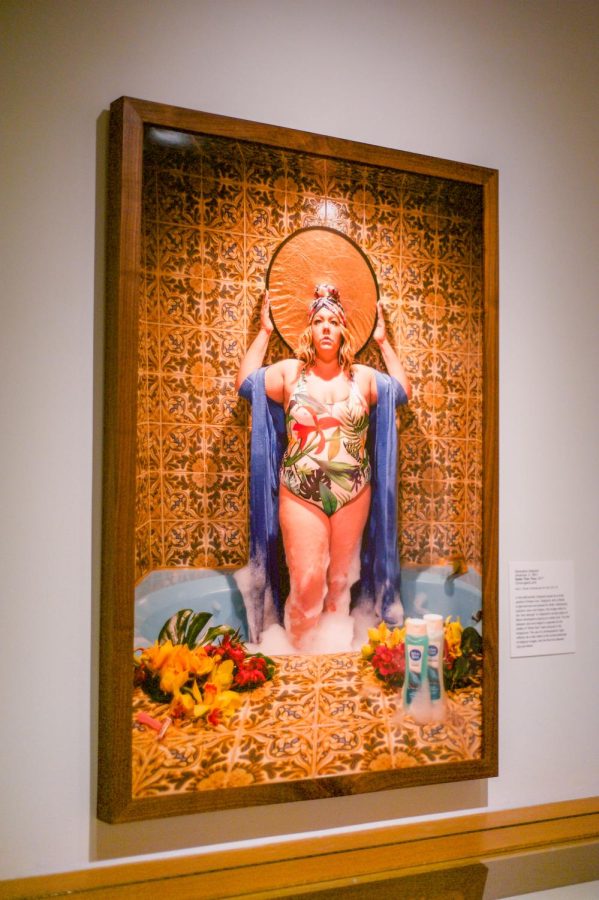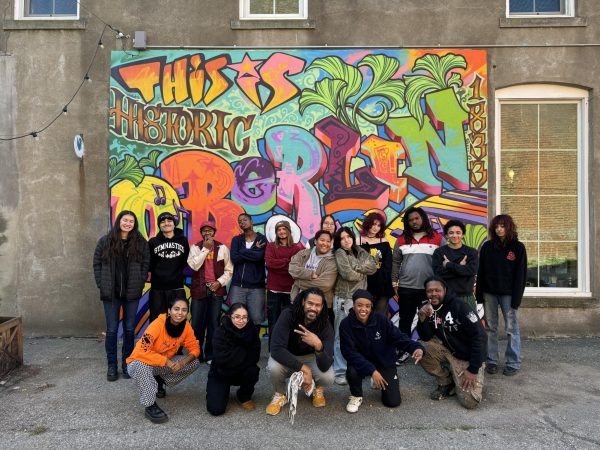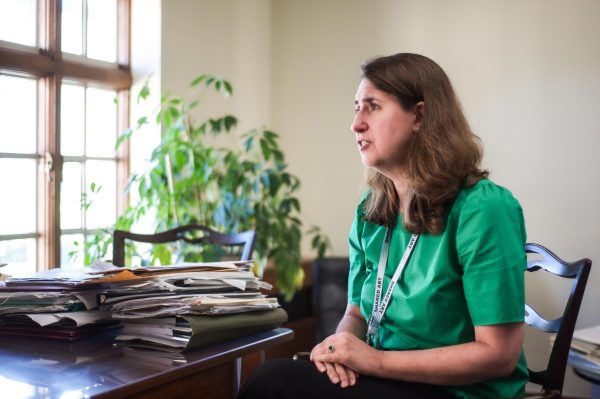Bodies Are Fluid Film Screening Expands on AMAM Conversation Through Feminist Video Art
Femme ’n isms, Part I: Bodies Are Fluid, is an exhibit currently on display at the Allen Memorial Art Mu- seum.
On Tuesday, Hallock Auditorium was the site of the screening of the experimental film compilation Bodies are Fluid. Viewers interested in media art related to gender identity filled the auditorium to watch short art films exploring the topic. This included a film created solely with the artist’s mouth, a 1970s-era feminist film on menstruation, and a 16-minute-long recording of an intimate performance in which one artist shaves another’s lower body. The organization of this event started with a Winter Term project: Decolonizing Cinema History, taught by Visiting Assistant Professor of Cinema Studies and Mellon Postdoctoral Fellow Jennifer Blaylock. The Winter Term course invited students with a variety of experiences and interest levels to participate and allowed them to explore feminist media and film art.
“The impetus for the Winter Term project started from a couple of needs that I saw on campus,” Blaylock said. “One is [that] the Cinema Studies department has a collection of 16 millimeter films that are mostly legacy prints from teaching before DVD or VHS, and they’ve sort of just stayed around. Part of the project was to deal with these films and see what they are. The other part of the project is that I’ve been writing a lot about archives recently, and so I was interested in thinking about a lot of new literature on film archives in particular that have to do with decolonizing institutions of archival memory. How are archivists addressing neglect of certain histories based on race, gender, sexuality, [and] geographic parts of the world that have been left out from film memory?”
The films screened at the event spanned a wide range of topics and forms, but were tied together by their focus on bodies and bodily fluids. The curatorial process for the screening was undertaken by Blaylock and College first-year Nat Becker-Stevens, who participated in the Winter Term project. The screening was inspired by Femme ’n isms, Part I: Bodies Are Fluid, an exhibit at the Allen Memorial Art Museum curated by Ellen Johnson ’33 Assistant Curator of Modern and Contemporary Art Sam Adams that opened last semester. It is the first edition of a new series within AMAM that honors art and forms that highlight and represent intersectional identities and feminist thought. This first exhibition specifically highlights women and femininity, and the works in the exhibit deal with body parts and bodily fluids.
“We also wanted to expand on things that maybe we didn’t see,” Becker-Stevens said. “I really liked the ones that had a lot of sensation. … that was very much connected to a bodily sensation, which I think also works for the body fluid sort of thing, and thinking about bodily presence and when you’re watching that [you’re] having a physical experience.”
During Winter Term, the students researched and sorted through various experimental film catalogs, put together a slide deck of the films they were interested in presenting, and received curatorial advice from Adams. After Winter Term, Blaylock and Becker-Stevens decided to keep fine-tuning the project and put together the final selection for the Bodies are Fluid film screening. The films were chosen to highlight different perspectives on bodies and diverse representation of bodies.
“Part of what we were looking for [after Winter Term] was for our selection to be more diverse and that the films could go in a good, curated order,” Becker-Stevens said. “That was definitely a conscious part of it. We also wanted to feature a few works that were older. We only ended up including two pieces that were older, which were ‘Head’ by Cheryl Donahue from 1993 and ‘Menses’ by Barbara Hammer from 1974. The [others] are from the 2000s.”
Blaylock hopes to continue collaborating with the AMAM and bringing video art into conversations being had through other visual artforms. The medium of video holds a specific role in feminist history as a form of performance art; however, this history and artform seem to be missing from many artistic establishments at Oberlin. Blaylock hopes to continue presenting this art to the Oberlin community through future events.
“I see a place for this here,” Blaylock said. “If I’m here, I would love to continue doing it. I have ideas for other films to bring. … It wouldn’t be necessarily experimental film but would continue this idea of expanding the archive and what we think about cinema and histories of cinema.”








